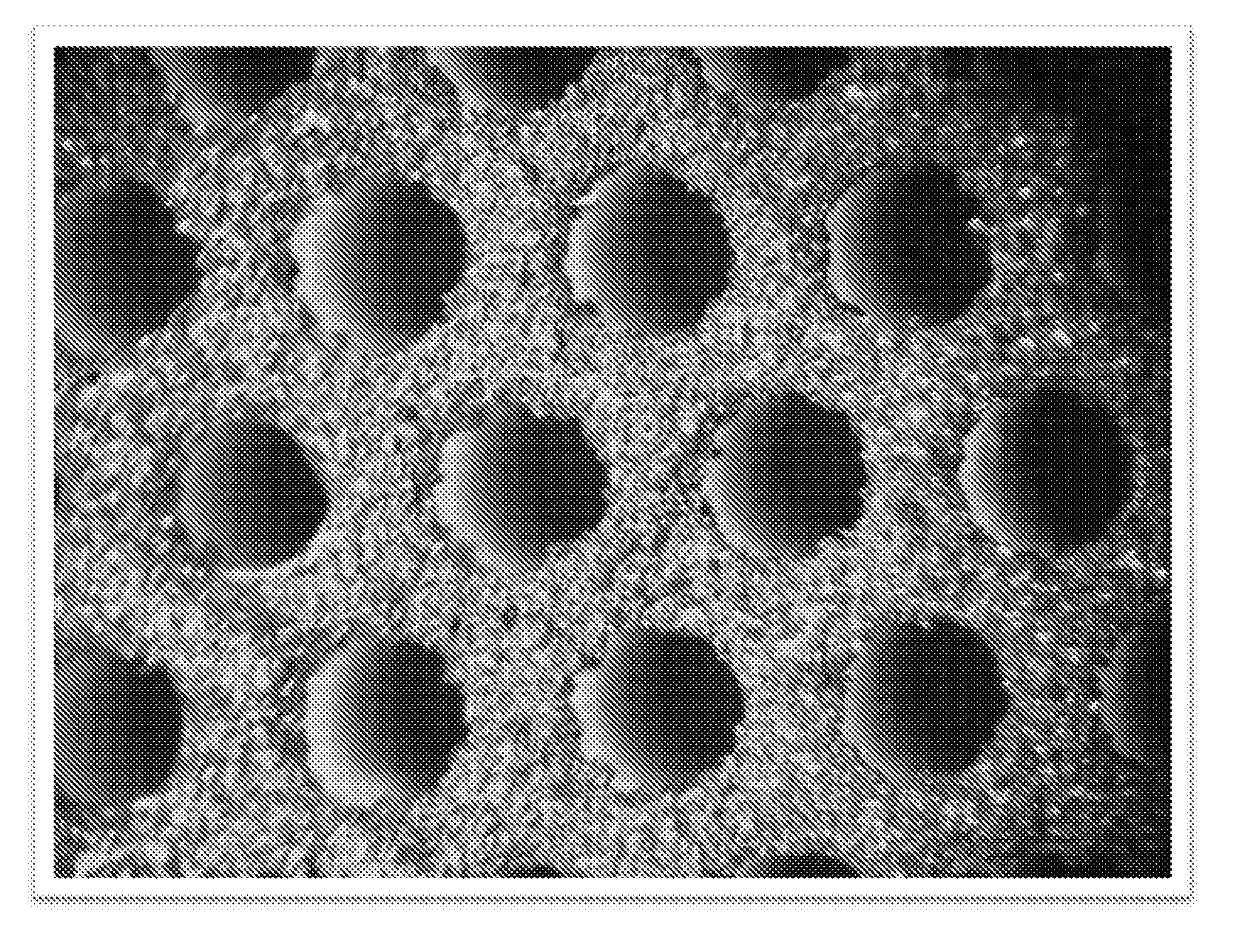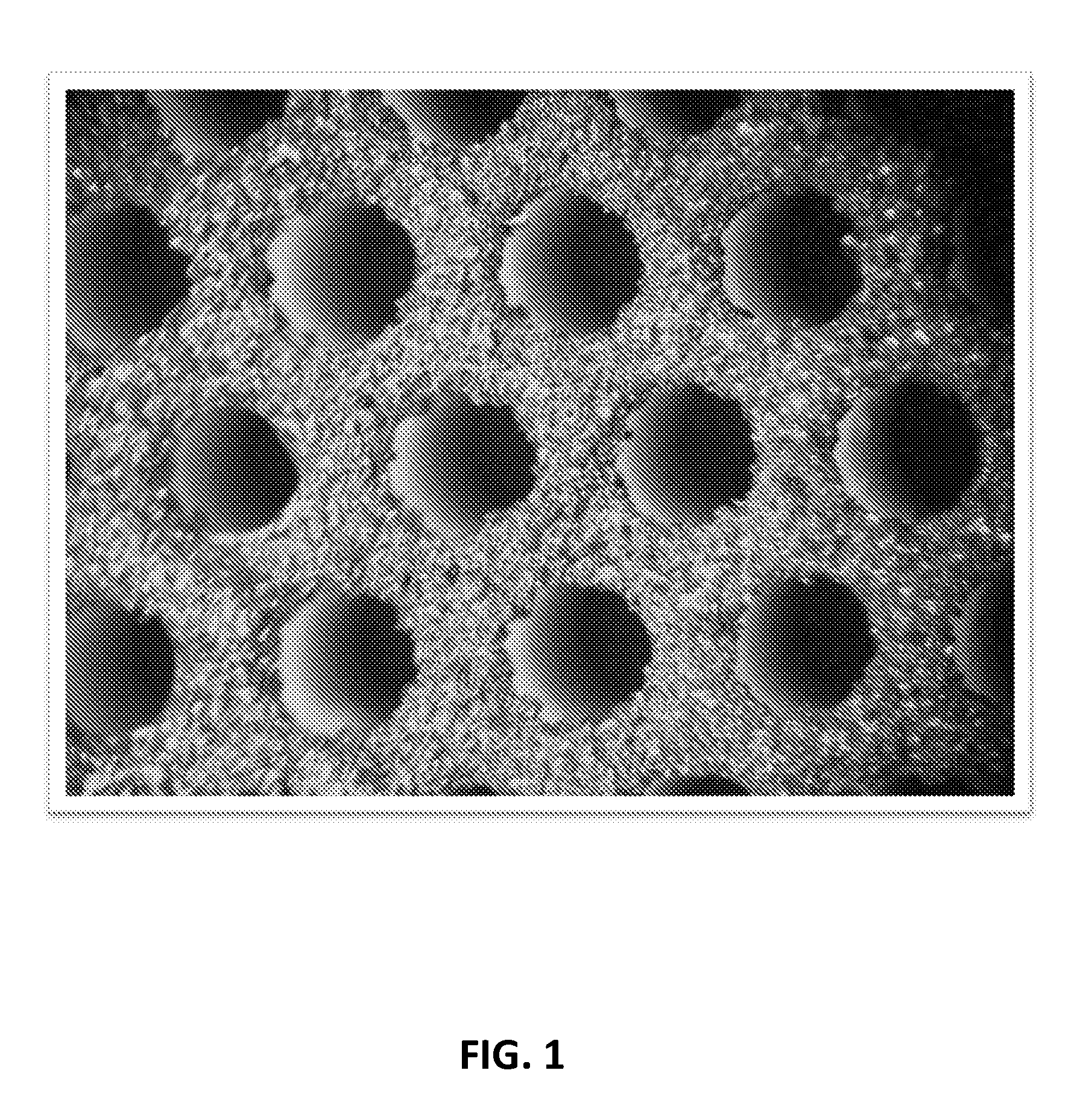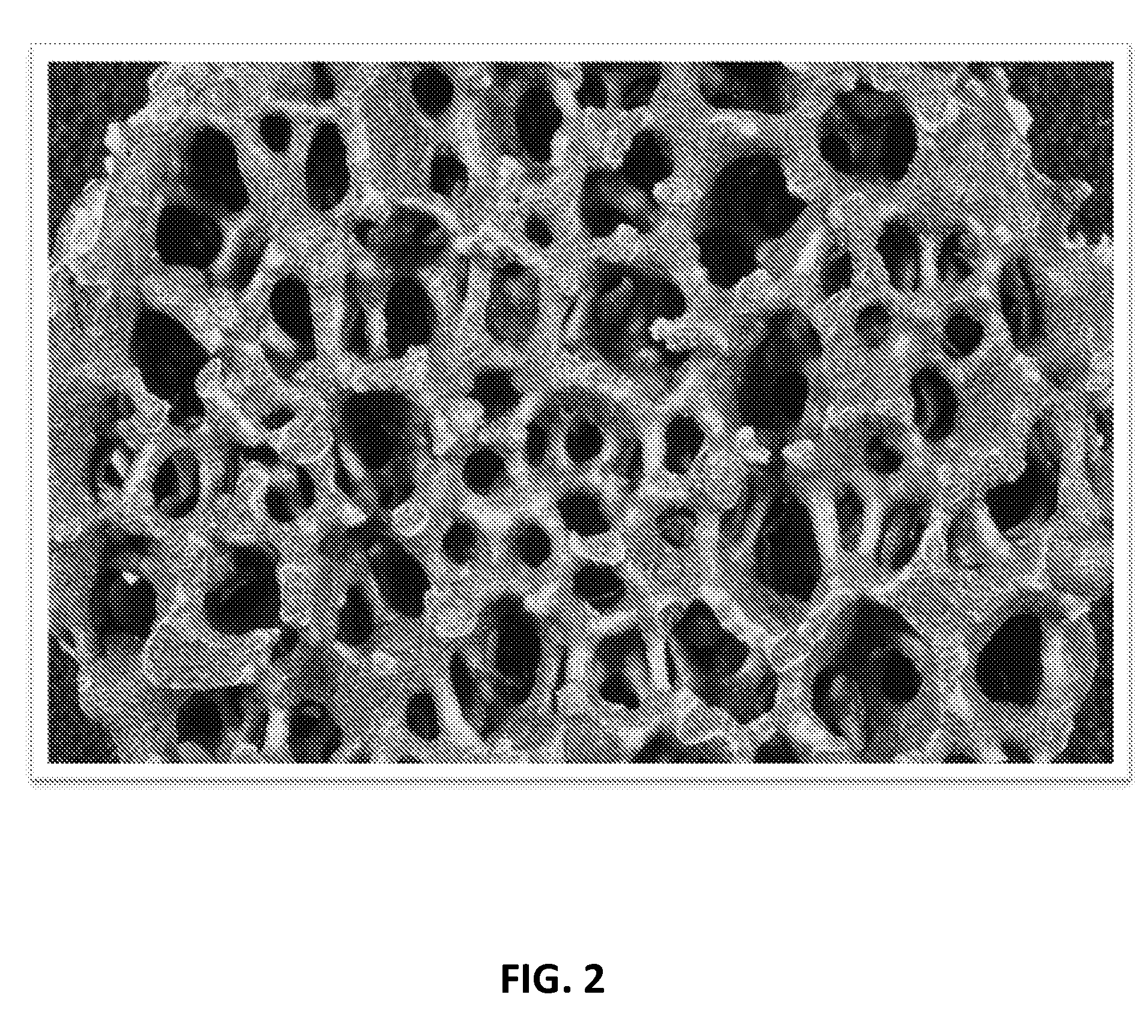Coatings for Refractory Substrates
a technology of refractory substrates and coatings, which is applied in the direction of discharge devices, blast furnaces, casting apparatus, etc., can solve the problems of structurally inability to increase the molten metal throughput without a ineffective capture of small inclusions, and inability to increase the molten metal throughput without corresponding decrease in filtration efficiency, so as to increase the ability of the treated substrate and increase the filtration efficiency
- Summary
- Abstract
- Description
- Claims
- Application Information
AI Technical Summary
Benefits of technology
Problems solved by technology
Method used
Image
Examples
example 1
[0032]Ceramic cellular honeycomb filters made of mullite were used as filter substrates. Each filter was a 2.5 inch×2.5 inch square, with a thickness of 0.5 inch, having approximately 537 open pores or channels, each measuring 0.090 inch in diameter. One surface face of each filter was coated with about 0.24 grams of an aqueous solution of potassium silicate commercially available under the designation KASIL 1 from PQ Corporation, followed immediately by an even application of 1.06 gram of 60-mesh iron silicon oxide having a composition similar to that listed in Table 1. The potassium silicate solution comprised 70.9 weight percent water and 29.1 weight percent silicic acid and potassium salt in a ratio to produce potassium silicate upon drying. Next, the filters were placed in a curing oven and dried. FIG. 1 is an optical micrograph showing the coated ceramic cellular honeycomb filter.
[0033]Each filter was placed in the runner system of a green-sand mold, where 46 pounds of class-3...
example 2
[0037]Reticulated ceramic foam filters made of silicon carbide were used as filter substrates. Each filter was a 2.75 inch diameter disc, with a thickness of 0.75 inch, and had 10 pores per inch (PPI). Each filter was immersed in about 1.4 gram of an aqueous solution of potassium silicate as described in Example 1 up to one half of its thickness and then drained, followed immediately by an even application of 2.3 gram of 200-mesh iron silicon oxide particles. Next, the filters were placed in a curing oven and dried. FIG. 2 is an optical micrograph showing the coated silicon carbide ceramic foam filter.
[0038]The surface-active coated reticulated ceramic foam filters were securely placed, treated face up, in the bottom of an insulating neck-down riser sleeve which was then placed into the cope of a horizontally parted green sand mold. The ferrous alloy poured was 58 pounds of 65-45-12 grade ductile iron. Once the molten ductile iron reached the target pouring temperature of 2,562° F. ...
PUM
| Property | Measurement | Unit |
|---|---|---|
| thickness | aaaaa | aaaaa |
| thickness | aaaaa | aaaaa |
| weight percent | aaaaa | aaaaa |
Abstract
Description
Claims
Application Information
 Login to View More
Login to View More - R&D
- Intellectual Property
- Life Sciences
- Materials
- Tech Scout
- Unparalleled Data Quality
- Higher Quality Content
- 60% Fewer Hallucinations
Browse by: Latest US Patents, China's latest patents, Technical Efficacy Thesaurus, Application Domain, Technology Topic, Popular Technical Reports.
© 2025 PatSnap. All rights reserved.Legal|Privacy policy|Modern Slavery Act Transparency Statement|Sitemap|About US| Contact US: help@patsnap.com



